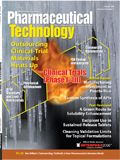Quality Disconnect
QbD, PAT, design space, what's it all about? This seems to be a common industry response to FDA's directional push.
Welcome to Pharmaceutical Technology's new PharmTech Talk column. In the year ahead, our editors will be discussing what we hear you discussing such as the statement above. We all attend conferences and workshops, and we all sit quietly and nod our heads as we listen to experts and regulators tell us what we're supposed to be doing to meet standards. But during much-needed coffee breaks, predinner cocktails, and networking receptions, real views tend to come out. It's in those "off-the-record" chats that we hear what you really think about "the state of the industry."

Angie Drakulich
Take the 2007 American Association of Pharmaceutical Scientists meeting. Despite the numerous, jam-packed quality-by-design and process analytical technology sesssions, I kept hearing disgruntlement from attendees: "Why do we have to change our entire system if FDA is not changing the way it does inspections?" "If we provide FDA with more detailed information, that will open the door to more questions—and perhaps less approvals." "I agree with QbD, but the higher-ups won't pay for it until there are proven results (i.e., revenue)." "Quality systems and harmonization are not required—so why follow them?"
Another common concern had to do with the global impact on the pharma industry. If a company finalizes its design space, for example, and then decides to contract out a few steps, different regulations in different countries throw a wrench in the whole based, risk managment" plan.
We'd like to hear your thoughts on these issues, so please email adrakulich@advanstar.com Stay tuned for more PharmTech Talks. Angie Drakulich is the managing editor of Pharmaceutical Technology.
A few readers commented on this column. Click here to read their thoughts.
